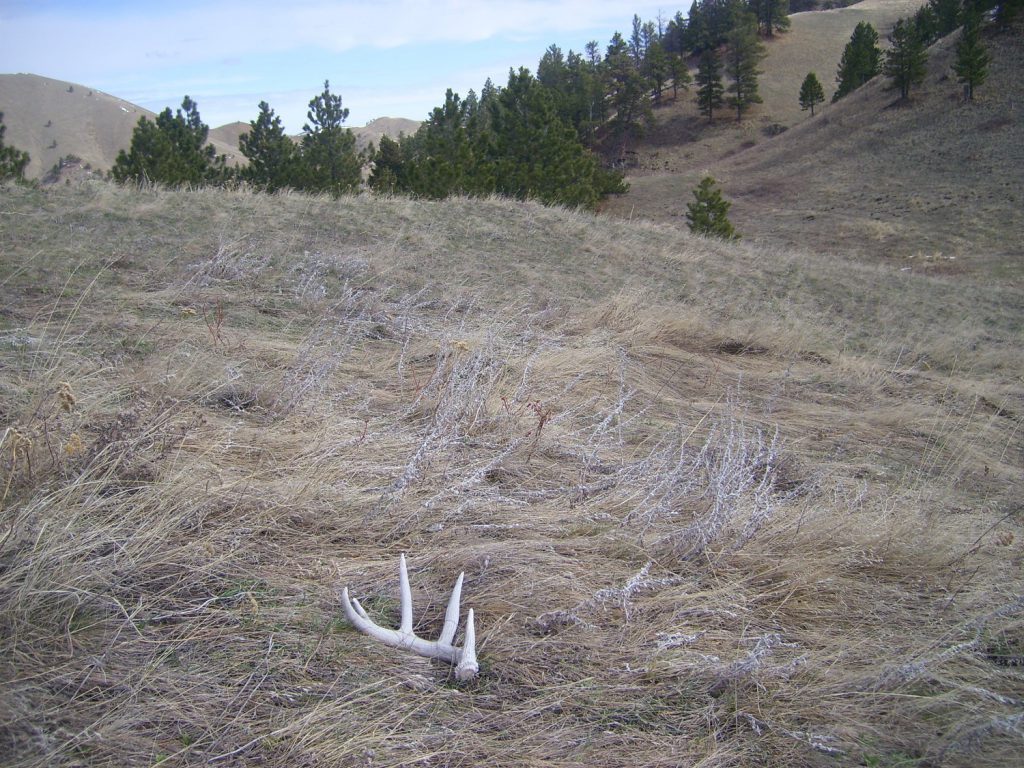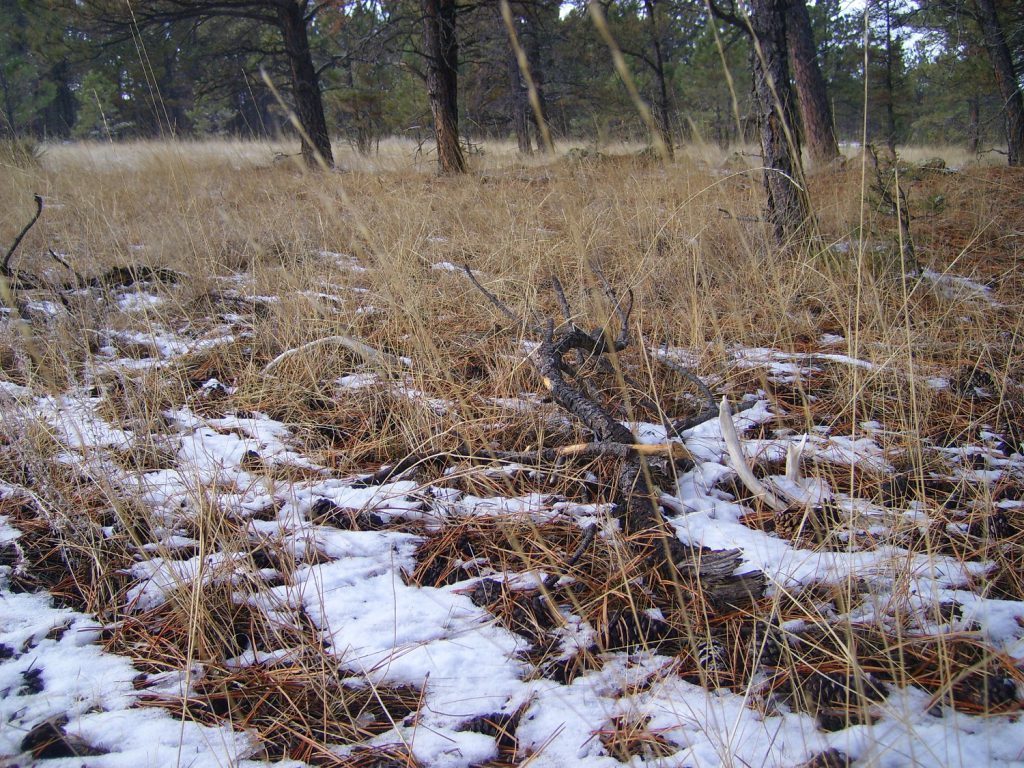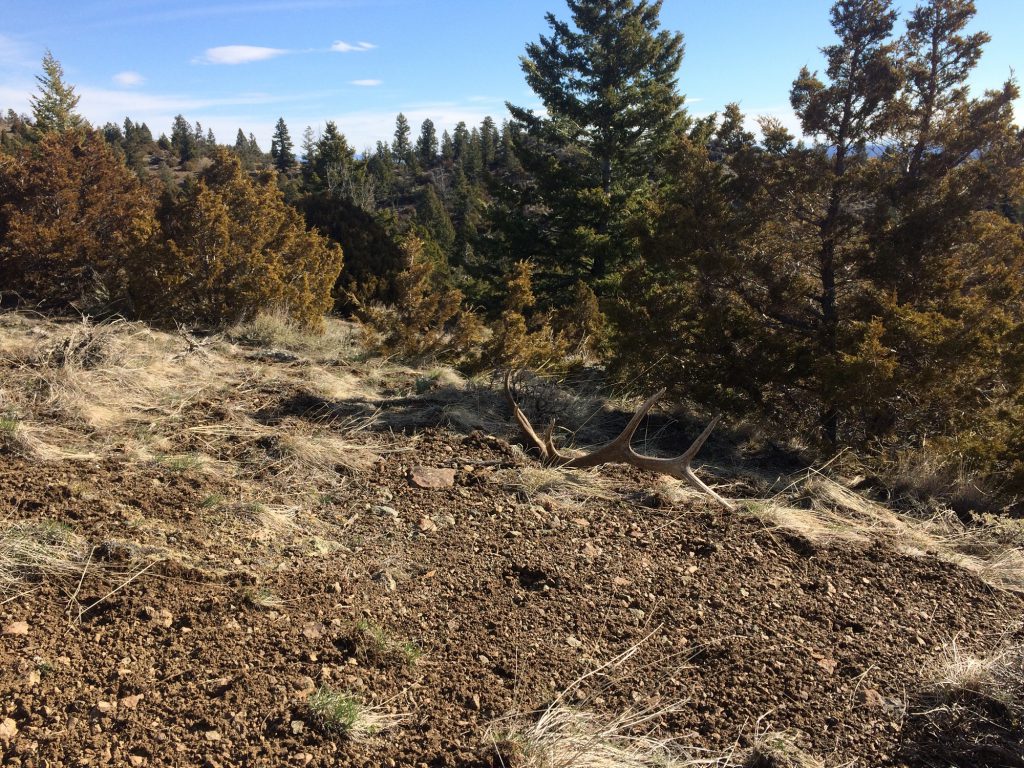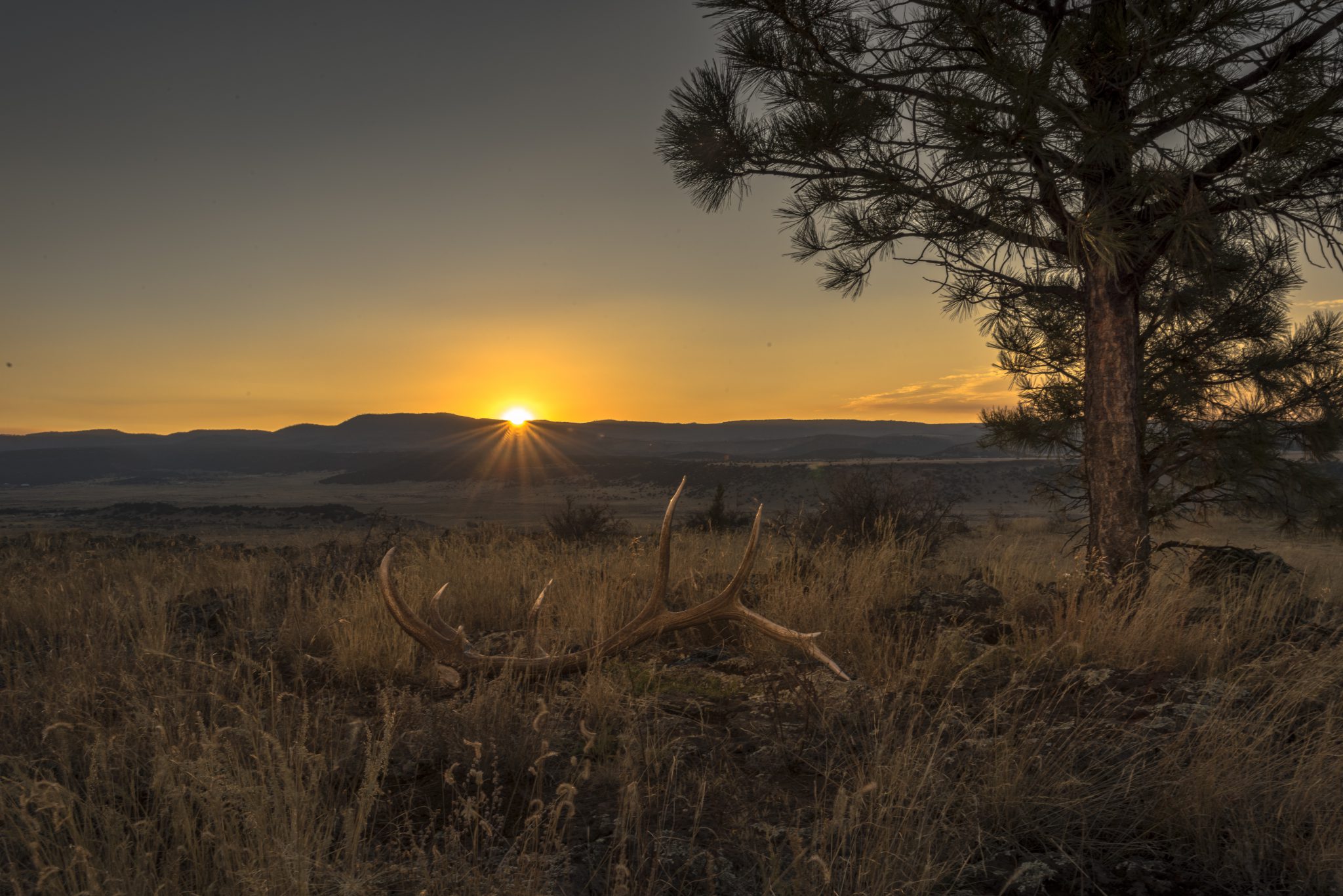Spring is my second favorite season. The winter weather is finally loosening its grip. The rivers are breaking up, the grass is starting to poke through the snow patches on south-facing slopes, and bears are crawling out of their dens. Yet my favorite part of spring is shed antler hunting.
Deer, elk, and moose go through the annual ritual of losing last year’s antlers in late winter and begin to grow new bone through spring and summer. This cycle starts after the breeding period when the bucks and bulls drop testosterone, signaling the beginning of the shedding of their antlers. The pedicel, or point where the antler meets the skull, degrades and eventually the antler drops off, usually one at a time.
Shed hunting or antler hunting or horn hunting (even though antlers aren’t horns) is the spring search for these castoffs after the snowmelt. Shed hunting has boomed in popularity in recent years as more people have realized the benefit of outdoor spring exercise — and the thrill of finding a castoff antler. Here are some tips for getting started.

Know the Range
Deer and elk have historic areas they use for different aspects of their life: breeding grounds, summer feed, winter feed, etc. Paying attention to where you see the male animals in winter will give insight into where to start your search in spring. It’s important to note that animals are stressed during the winter more than at any other time of year. They’re weakened from the long, cold several months of just trying to get by in many areas. For this reason, several states have made it illegal to go into winter ranges before a certain date. Check state law before you make off for the mountains.
Find the Feed
If you’ve done your homework and seen some deer or elk wintering, that’s a great place to start looking. Animals try to winter where getting to feed is easiest for them, and they need to spend more time searching for food due to the stressors of winter. By becoming familiar with an animal’s food sources and at what time of year they’re using each source, a person can find spots to look for dropped antlers based on what’s on the menu.

Break Into the Bedroom
After feeding, animals spend the most significant portion of their day in their beds, resting and digesting their food. Looking for bedding areas that are close to feeding spots will pay off for the patient antler hunter. Most animals bed in fairly thick cover, so bedding areas can require more patience to work through but provide just as much opportunity at an antler as a food source.
Run Fences
Another place to check frequently are fence lines. As antlers loosen on the skull, a sudden jolt, such as jumping a fence, can jar them from their owner, leaving the patient and observant walker a chance at finding them. My son found his first matched set of deer antlers this way. After picking one up in a field, he started to walk the adjacent fence lines until he found the first antler’s mate tucked in the grass by a barbed wire fence.
Bring the Binos
Investment in a good pair of binoculars can pay dividends as well, depending on the country a shed antler hunter frequents. Instead of walking all over that big field or mountainside, get above or across from it and use your glass to pick it apart. In the early to mid-spring, the new grass hasn’t grown up enough to obscure most freshly shed antlers, allowing a detail-conscious person to find them from afar.

Know Your Colors
It’s important to note that the length of time the antler has been lying on the ground and its location can determine the color. An antler shed on a south-facing slope, exposed to the sun, will turn white within a year, making it easier to see — whereas one lying in the shade on a north-facing slope with limited sun may stay mostly brown up to a year or more. This can be a clue to determine how long ago an antler was shed.
Freshly dropped antlers have pink or bloody pedicels, due to the recent separation, and can carry a unique aroma of the vegetation the deer or elk was rubbing on before they shed. Year-old antlers have begun to turn or are totally white due to sun bleaching but are smooth and haven’t begun to develop exterior faults. After more than a year in the sun, antlers naturally begin to break down, soften, and crack. Once they get to this stage, they’re sometimes referred to as “chalk” due to their propensity to leave white pieces in one’s hand after handling.
Antlers are all unique in their own way, like the many reasons people have for picking them up. Some like the exercise, some the challenge of finding bigger ones than last year, while others may depend on the collection and selling of antlers as part of their yearly income. Whatever your reason, get out and incorporate some of these tips with your own ideas and enjoy searching for some brown gold.
Read Next:








Comments